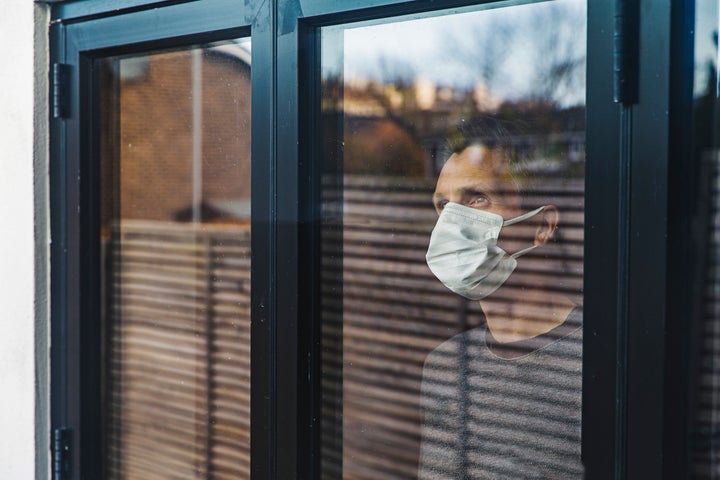
The ongoing pandemic is upending so many different parts of the way we live — including the way we connect and grieve.
Back in the Before, the illness or death of someone we loved was already deeply traumatic. But now, as the deadly virus continues to spread and our collective grief grows, illness is an even more terrifying reality.
There’s also the physical reality that in most cases, we can’t even visit a sick or dying friend or relative. If the person you love has tested positive for COVID-19, it’s dangerous for anyone to visit them — but even if they don’t have the virus, social distancing practices might prevent you from safely seeing someone who is ill.
It’s normal that the added layer of necessary distance makes dealing with a loved one’s illness even more difficult, said Ashley Mielke, a psychologist who founded The Grief and Trauma Healing Centre in Edmonton.
“There would be a sense of powerlessness and helplessness that would accompany these already painful emotions,” she told HuffPost Canada.
“We are not only grieving the fact that our loved ones are ill and dying. We’re now grieving the loss of freedom and loss of power to be able to visit them, as well as the loss of physical in-person contact and connection with our loved one.”

When someone we love is sick and on the verge of death, one of the things we most need is to “become emotionally complete” with that person, Mielke said. That involves communicating all of the things we’ve left unsaid, or that we feel it’s important for them to hear: how much we love them, or an apology or an acknowledgement of the ways they’ve helped or supported us, or a clear statement of the things we love and value about that person.
Usually, that emotional completion paired with physical, in-person touch and connection can help us
“It’s in those human-to-human moments and conversations in which we experience the most richness,” she said. “We are built for connection, not isolation.”
Social distancing means that in-person connection is lost, and it’s a big loss — Mielke said we shouldn’t discount how hard that is. “It’s important to honour the unique emotions associated to these additional losses, and not to minimize how painful and devastating these circumstances are and will be for many people.” But it doesn’t mean we can’t find new ways to connect with the people we love when they’re sick.
If possible, connect by phone — or even better, video chat
This is a big “if.” But if the person you love has both the cognitive capacity to speak to you and access to a phone or computer, speak to them the way you would in real life. That way, you get to say “all of the important emotional communications,” Mielke said, “Like ‘I love you, I appreciate you, I miss you, and I wish I could sit next to you.’”
Send them a letter or record a message
Many people aren’t in a situation where talking through a device is possible. But in some cases, you might be able to write a letter that a health-care worker or support staff member can read them, or record an audio or video message that can be played to them. That way, you know your words were communicated to them.
Give them a transitional object
Depending where your loved one is, check to see if it’s possible and not a health hazard to send what Mielke calls a “transitional object” into their room. It could be anything that’s meaningful to you, or to them, or your relationship — maybe something like a photo album, or a stuffed animal, or a blanket, or a piece of jewelry.
“Even though the physical aspect of the connection is missing, they can accomplish the emotional task of communicating their love and appreciation for their loved one, without having to be next to them,” she said.

Send your support (from a distance) to hospital or support workers
Helping others can bring a lot of comfort in a difficult time, and if you weren’t able to connect emotionally with your loved one as much as you had hoped, supporting the medical and social work staff who cared for them is one way to honour that connection.
Depending what kind of work that person did to help the person you love, there are a ton of different ways you can support them: cook them a meal or drop off groceries, buy them gift cards, or donate to the organization they’re working for, Mielke suggests.
Talk to someone close to you
If you weren’t able to speak to or connect with someone you loved before they died, it’s important you communicate what you wanted to say to someone else: a friend, a spouse, a family member, a therapist, whoever.
“Having someone witness our grief and our communications is incredibly powerful for our healing,” Mielke said. Speaking those difficult feelings out loud is an important part of the process.
Don’t neglect self-care
What’s happening now is difficult for everyone, physically and emotionally.
“When we are grieving, we have a reduced ability to concentrate, we feel exhausted and overwhelmed,” Mielke said. “It often feels like we’re riding a roller-coaster of emotion.”
Make sure you’re stepping off that roller-coaster to go back to the self-care basics: getting good sleep, eating nutritious foods, connecting with people, focusing on what’s in your control, and “giving ourselves permission to grieve and feel the mass of emotion we are experiencing inside. ”
Also on HuffPost: